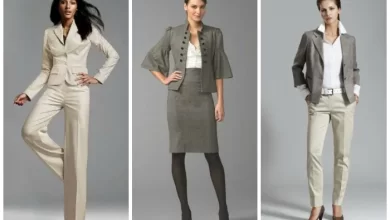Sustainable Style: A Green Guide to Fashion


In a world increasingly aware of environmental issues, sustainable fashion has emerged as a powerful force for change. More than just a trend, it’s a movement that encourages consumers and the fashion industry to prioritize ethical and eco-friendly practices. In this “Green Guide to Fashion,” we’ll explore the concept of sustainable style, its importance, and how you can embrace it in your own wardrobe.
The Environmental Impact of Fast Fashion
Before diving into sustainable fashion, it’s essential to understand the environmental impact of fast fashion. Fast fashion is characterized by rapid production cycles, low-quality materials, and cheap labor. The result? Mass consumption, excessive waste, and harmful environmental consequences.
- Reduce, Reuse, Recycle
One of the core principles of sustainable fashion is the three Rs: Reduce, Reuse, and Recycle. Reducing your clothing consumption by investing in quality pieces that stand the test of time is the first step. Reusing clothing through thrift shopping, clothing swaps, or upcycling old garments breathes new life into items that might otherwise end up in landfills. Lastly, recycling textiles ensures that they’re repurposed rather than discarded.
- Choose Ethical Brands
Supporting ethical fashion brands is a significant way to promote sustainable style. Look for brands that prioritize fair labor practices, pay their workers a living wage, and ensure safe working conditions. Additionally, many ethical brands are committed to using environmentally friendly materials and production processes.
- Invest in Quality
Instead of opting for disposable fashion, invest in high-quality, timeless pieces that will last. While they may have a higher upfront cost, these items often prove to be more cost-effective in the long run. Quality clothing also has a lower environmental footprint, as it doesn’t need to be replaced as frequently.
- Natural and Sustainable Fabrics
Choosing clothing made from natural and sustainable fabrics is another key aspect of sustainable style. Fabrics like organic cotton, hemp, Tencel, and bamboo are eco-friendly options that reduce the use of harmful chemicals and promote responsible resource management.
- Repair and Upcycle
Don’t discard clothing just because of minor damage or style changes. Learning basic sewing skills can help you repair items, extending their lifespan. Additionally, get creative with upcycling projects – turn old jeans into shorts, transform a shirt into a tote bag, or embellish worn-out clothes to give them a fresh look.
- Minimalism and Capsule Wardrobes
Embrace minimalist fashion and create a capsule wardrobe, consisting of versatile, mix-and-match pieces. This not only reduces the number of clothing items you need but also encourages a more sustainable mindset by focusing on what truly matters in your closet.
Conclusion
Sustainable style isn’t just a buzzword; it’s a conscious choice that empowers individuals to make a positive impact on the environment and the fashion industry. By adopting the principles of reducing waste, supporting ethical brands, investing in quality, choosing sustainable fabrics, and embracing a minimalist approach, you can play a crucial role in promoting a greener, more sustainable future for fashion.
Remember that small changes in your fashion choices can lead to significant shifts in the industry. As consumers demand sustainability, fashion brands will respond by adopting more responsible practices. So, let’s embark on this journey towards a more sustainable and stylish future, one eco-friendly garment at a time.




